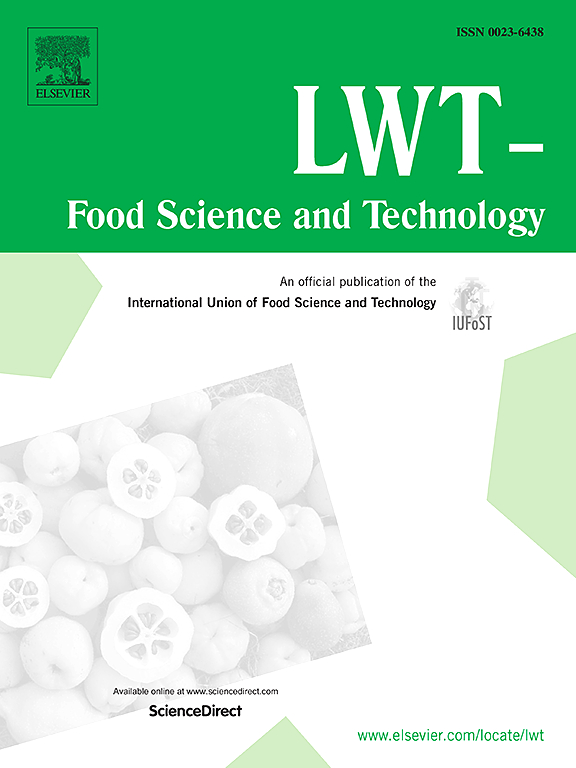新型植物乳杆菌和肠系膜白菌胞外多糖生物合成途径的基因组学研究
IF 6
1区 农林科学
Q1 FOOD SCIENCE & TECHNOLOGY
引用次数: 0
摘要
乳酸菌(LAB)以其合成外多糖(EPS)的能力而闻名,在食品工业中有许多应用。这项研究采用了基因组方法,利用生物信息学工作流程,使用原始细菌全基因组序列和可定制的数据库来预测特定的目标属性。利用该流程对26株植物乳杆菌和肠系膜芽孢杆菌的EPS生产潜力进行了评估,并对其实际EPS生产能力进行了实验评价。基因组分析表明,菌株Leu. mesenteroides C13、C18和C20在研究菌株中具有最高的EPS生产遗传潜力,实验EPS产量定量证实了这一点。这3株菌株分别含有50、51和39个EPS生产相关基因,在添加10% (w/v)蔗糖的MRS培养基中,37℃培养20 h, EPS产量分别为1.67 mg/mL、1.57 mg/mL和0.82 mg/mL。菌株主要利用细胞外EPS生物合成途径,表明它们主要生产均多糖(hop),即葡聚糖和利凡。因此,这些菌株可以潜在地用于生产用于食品和其他生物技术应用的EPS。本文章由计算机程序翻译,如有差异,请以英文原文为准。
Genomic insights into exopolysaccharide biosynthesis pathways in novel Lactiplantibacillus plantarum and Leuconostoc mesenteroides strains
Lactic acid bacteria (LAB) are known for their ability to synthesise exopolysaccharides (EPS) which have many applications in the food industry. This research employed a genomic approach, utilising a bioinformatics workflow that uses raw bacterial whole genome sequences and a customisable database for predicting specific target attributes. The workflow was used to assess the EPS production potential of 26 novel strains of Lactiplantibacillus plantarum and Leuconostoc mesenteroides, along with experimental evaluation of their actual EPS production capabilities. The genomic analysis revealed that strains Leu. mesenteroides C13, C18, and C20 possess the highest genetic potential for EPS production among the studied strains, which was confirmed by experimental EPS production quantification. These three strains contain 50, 51, and 39 EPS production-related genes, respectively, and produced 1.67 mg/mL, 1.57 mg/mL, and 0.82 mg/mL of EPS, respectively, during cultivation at 37 °C for 20 h in MRS medium with 10% (w/v) sucrose supplementation. The strains predominantly utilise the extracellular EPS biosynthesis pathway, suggesting that they primarily produce homopolysaccharides (HoPS), viz. dextran and levan. Hence, these strains can be potentially used for production of EPS for food and other biotechnological applications.
求助全文
通过发布文献求助,成功后即可免费获取论文全文。
去求助
来源期刊

LWT - Food Science and Technology
工程技术-食品科技
CiteScore
11.80
自引率
6.70%
发文量
1724
审稿时长
65 days
期刊介绍:
LWT - Food Science and Technology is an international journal that publishes innovative papers in the fields of food chemistry, biochemistry, microbiology, technology and nutrition. The work described should be innovative either in the approach or in the methods used. The significance of the results either for the science community or for the food industry must also be specified. Contributions written in English are welcomed in the form of review articles, short reviews, research papers, and research notes. Papers featuring animal trials and cell cultures are outside the scope of the journal and will not be considered for publication.
 求助内容:
求助内容: 应助结果提醒方式:
应助结果提醒方式:


